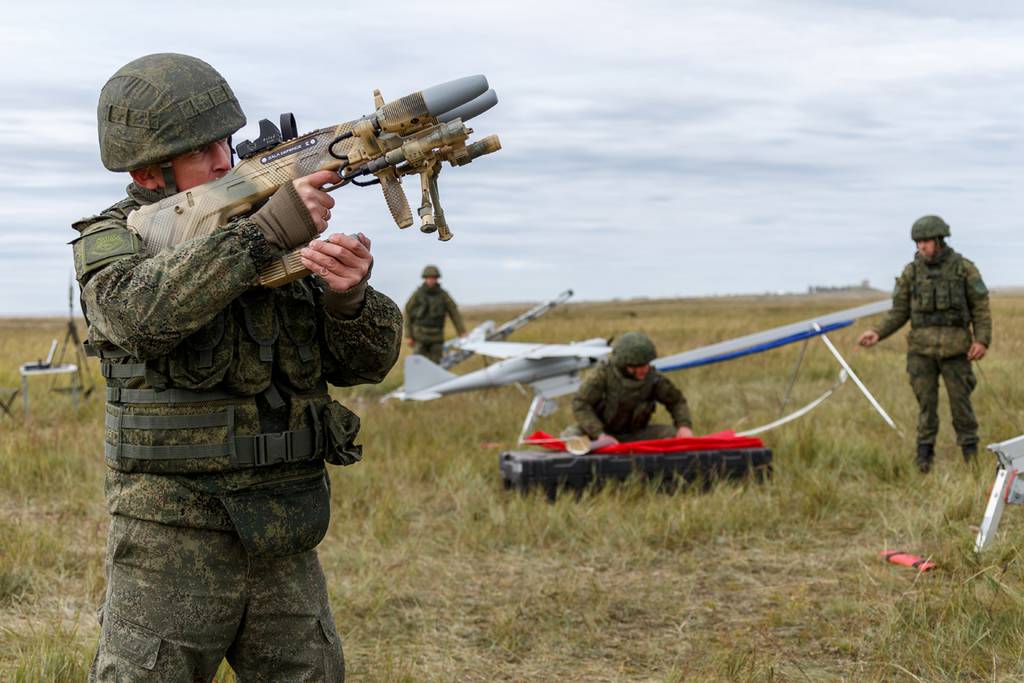What role is Russia’s emerging technology playing in their invasion of Ukraine?
The short answer: Not much right now, and that could be a problem as the conflict advances.
So far, the ongoing conflict has been a conventional war of iron and money. At least from public sources, Russia has not displayed the type of technologies that its military has been speculated to be developing or seen to be fielding in Syria and Crimea – advanced intelligence, surveillance and reconnaissance, unmanned aerial vehicle swarms, and sensor fusion, to name a few.
What we have seen out of Russia is the type of cyberattacks and disinformation campaigns that have come to be expected from the Kremlin in times of crisis – none of these have proven to be game changers or displays of new capabilities thus far. It is not a stretch to say Putin may have lost the information war both abroad and domestically, ultimately failing to keep abreast of technological advancements.
Indeed, some of the most impressive displays of advanced tech seem to be coming from U.S. companies aiding Ukrainian efforts.
From Microsoft warning the Ukrainian government when it detected Russian cyberattacks against Ukraine’s digital infrastructure hours before any missile was fired to Elon Musk’s lightning response to a tweet from Ukraine’s Vice President asking for Starlink satellite internet (not to mention Spacex’s ability to rapidly update Starlink software to bypass Russian short lived attempts to jam them), U.S. companies are easily thwarting Russian efforts to leverage technology for their offense.
It begs the question – what should the world make of this absence of more advanced military technology from Russia’s armed forces?
The tempting interpretation is simply that Russia’s military is not as capable as the West previously thought. It’s also feasible that Ukrainian forces were better prepared to resist than expected, not only on the physical battlefield but in the digital space as well. Ukraine’s Ministry of Digital Transformation, for example, reorganized and stood up an “IT Army” comprised of hundreds of thousands of IT professionals all aimed at countering Russian cyber maneuvers within days of fighting.
Whatever the reasons, Russia’s political and military leaders made a strategic choice, or error, thinking they could accomplish their near-term goals with limited conventional forces. Now, we see the effects of their recalibration as they turn to increasingly destructive strategies.
While this renewed offense has yet to incorporate more innovative technologies, there is still a possibility that the Kremlin will begin to leverage more advanced technologies in the future. Russia’s military already possess these capabilities, ranging from unmanned ground vehicles previously used in Syria to tactical and loitering UAVs which will arm Russian commanders with clearer battlefield situational awareness and hypersonic missiles. Of course, President Putin may also decide to launch more sophisticated cyberattacks with far-reaching implications.
With recent developments and these possibilities, the U.S. and its allies should prepare by expanding the kind of aid provided to Ukrainian defense forces.
In addition to counter UAV weapons, efforts should be made to help harden Ukraine’s command and control capabilities as well as civilian support infrastructure to ensure military and political leaders can continue to effectively coordinate defenses against Russian advances, even in the most austere environments.
The U.S. has an incredible defense innovation base of small tech companies able to provide dual-use commercial off-the shelf products quickly to those who need them. These non-traditional defense vendors possess market-proven, cutting edge technologies in everything from advanced cyber defenses and advanced materials manufacturing, to supportive supply-chain analysis, predictive maintenance and geospatial tech which could prove critical for food and ammunition distribution, aircraft and vehicle readiness, and battlefield intelligence and operations - all of which would be a force multiplier in backing the Ukraine’s forces.
While we haven’t seen Russia demonstrate particularly advanced technological capability in this conflict yet, it would be prudent for Ukraine, the U.S. and our allies to prepare as though more sophisticated attacks were possible and imminent. Innovation thrives in our defense industrial base and the U.S. private sector has been quick to respond to Ukraine’s call for assistance so far – the scale and sophistication of our own response could (and arguably should) increase as well to counter and get ahead of the effects of the increasingly brutal Russian aggression.
Terry Rydz is a senior engagement manager at Dcode.








